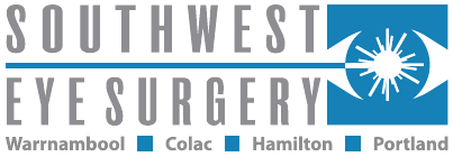Who is suitable for Refractive Lens Exchange?
 Light scatter caused by Dysfunctional Lens Syndrome
Light scatter caused by Dysfunctional Lens Syndrome
RLE may be suitable for you if you need thick, powerful glasses and would like to see better without the need for them. Alternatively, if you suffer from Presbyopia, RLE may be of benefit. Presbyopia is sometimes also referred to as Dysfunctional Lens Syndrome (DLS).
The term Presbyopia (or DLS) describes the early symptoms of cataract growth. It is due to the changes in vision that start at around the age of 40 years of age, usually following a period of 20-30 years of stable and good vision. It marks the beginning of a gradual but steady worsening in vision due to growth of cataracts.
The term Presbyopia (or DLS) describes the early symptoms of cataract growth. It is due to the changes in vision that start at around the age of 40 years of age, usually following a period of 20-30 years of stable and good vision. It marks the beginning of a gradual but steady worsening in vision due to growth of cataracts.
Presbyopia or Dysfunctional Lens Syndrome (DLS)

The main symptoms of Presbyopia (or DLS) are:
- problems with near vision e.g., reading
- light scatter causing glare and haloes around lighting at night
- need for frequent changes in spectacles
- vision at night becomes more blurry
Refractive Lens Exchange
In the RLE procedure, the lens is removed and a suitable Intraocular Lens (IOL) is implanted. The power of the IOL incorporates the power of your spectacles to eliminate or minimise the chance that you will need them after RLE.
Often, a multifocal IOL is implanted, if it is suitable, to maintain or improve near vision.
Often, a multifocal IOL is implanted, if it is suitable, to maintain or improve near vision.
When a multifocal IOL is not suitable other options are available to reduce or eliminate the need for glasses. One option is Monovision - where one eye is short-sighted and the other long-sighted. When both eyes are used together, the brain sees both distance and near vision to be clear and usually one is not aware that different things are blurry in each eye as the brain takes the best from each eye. This option works for very many people but may not be suitable for active and very young patients who need coordinated vision in both eyes for activities like sports or very fine, detailed near work, such as embroidery or electronic circuit board work.
Some people may not be suitable for monovision. Another option is Blended Vision, where one eye sees distance and the other sees objects clearly at arm's length (or intermediate distance). The advantage of blended vision is that there is less of a difference between the eyes when looking at far objects (unlike monovision) and this is an advantage for example when driving, as traffic in the distance is clear through one eye and the car dashboard is seen easily with the other eye. However, for seeing near objects such as reading small print or threading a needle, usually (but not always) a pair of reading glasses is needed.
Some people who have astigmatism require more specialised IOLs known as Toric IOLs. Use of these lenses further reduce the need for glasses after the operation.
As for cataract surgery, a full examination and a number tests are performed to ensure there are no associated conditions that could compromise the result of RLE and to accurately calculate the power of the IOL.
RLE is performed as a day procedure usually under intravenous sedation and does not require overnight admission. RLE on the second eye is usually performed a week or two later.
For more on Vision Correction for the over 40s, click the button below:
RLE is performed as a day procedure usually under intravenous sedation and does not require overnight admission. RLE on the second eye is usually performed a week or two later.
For more on Vision Correction for the over 40s, click the button below:
Any surgical or invasive procedure carries risks. Before proceeding, you should seek a second opinion from an appropriately qualified health practitioner
Proudly powered by Weebly
